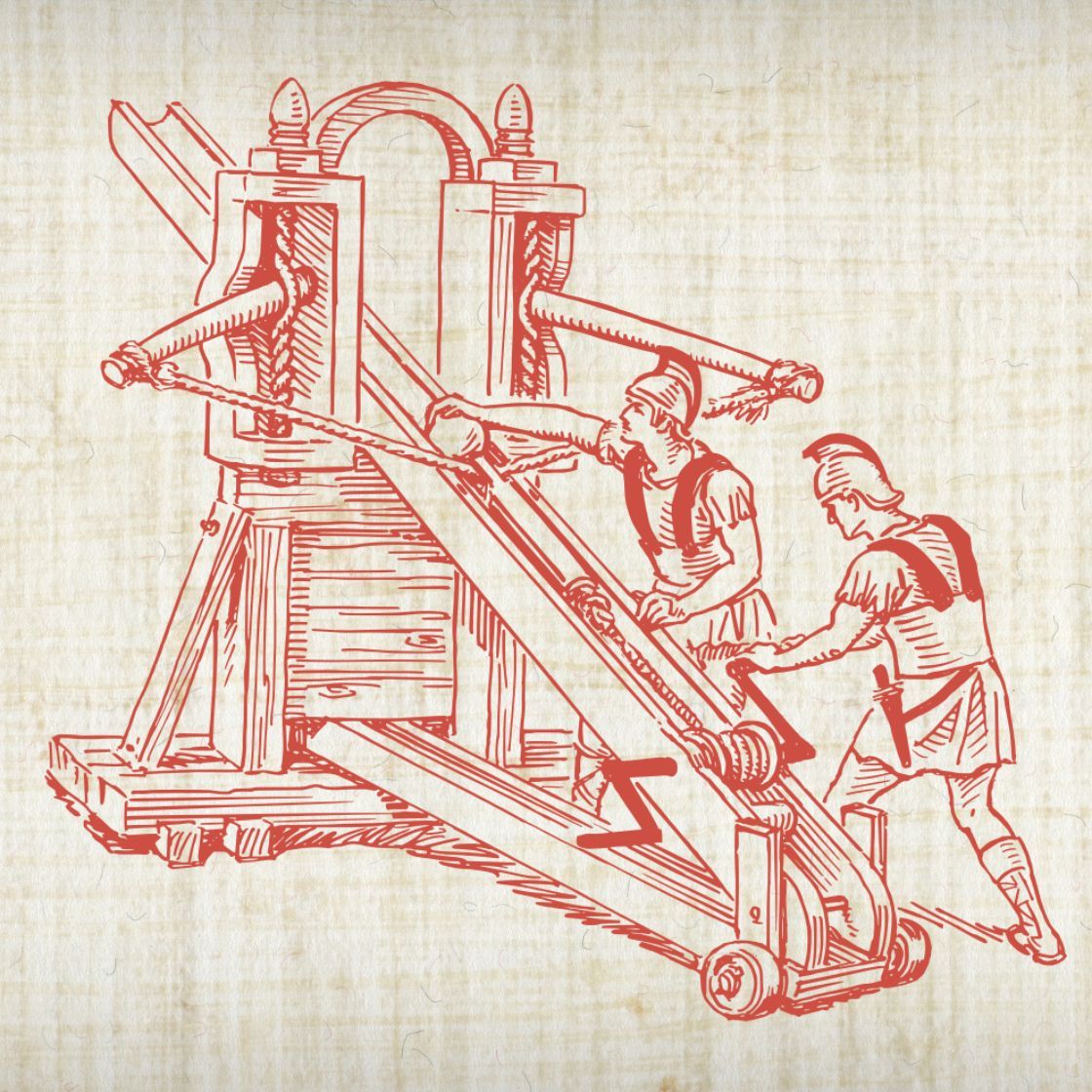What is a Ballista?
The ballista, also known as balista, represents one of the most important siege inventions of antiquity, and its impact on the evolution of military tactics is still a subject of study and admiration today. These devices were created to launch large projectiles over long distances, primarily during times of war, essentially designed to besiege fortifications and apply pressure on opposing armies.
Origin and Evolution of the Ballista
The ballista was initially developed around 400 BC thanks to the ingenuity of Dionysius I of Syracuse, refining earlier mechanisms like the oxybeles and the gastraphetes. Its innovative design was later optimized under the leadership of Philip II of Macedon and his son Alexander the Great, who introduced substantial improvements, such as the use of springs made from tightly wound rope coils, which gave the weapon greater power and efficiency in launching its projectiles.
 Pearson Scott Foresman, Public domain, via Wikimedia Commons
Pearson Scott Foresman, Public domain, via Wikimedia Commons
Main Features and Operation
The ballista operated with a mechanism similar to that of a crossbow, but adapted to a larger size to allow for the launch of darts or stone spheres over distances exceeding one hundred meters. Unlike smaller devices, the massive size of these weapons allowed for powerful projection, destroying garrisons at significant distances.
- Projection Capacity: Its structure allowed for the launch of heavy projectiles, useful for piercing defenses in fortified walls.
- Construction: Mainly made of wood, the ballistas were held together by iron plates and rivets, with a complete mechanism of winches and claws to reload the string and prepare for firing.
Use in Historical Conflicts
During antiquity, the ballista was strategically employed in significant military events, such as the Second Punic War, where smaller versions, known as scorpions, were also used. These weapons allowed for adjustments to their mechanisms to fire different types of projectiles, ensuring adaptability on the battlefield.
Differences with the Crossbow
Both the crossbow and the ballista share basic similarities, such as the use of a tensioned bow; however, the crossbow is much more compact and portable compared to the massive ballista. The latter was a siege tool, whereas the crossbow, originating in ancient China, spread throughout Europe and Asia, primarily as a handheld weapon during the Middle Ages.
Impact and Legacy of the Ballista
The role of the ballista in the evolution of artillery cannot be underestimated. Its construction and design secured its place as a key piece in military history, influencing later developments until the arrival of firearms, such as arquebuses and muskets. Although it eventually fell into disuse, its essence remains in modern forms used in sports and hunting, keeping alive a tradition of tactical engineering.
| Differences | Crossbow | Ballista |
|---|---|---|
| Size | Compact, portable | Large, stationary |
| Projectiles | Small arrows | Heavy darts, stones |
| Use | Individual handheld weapon | Siege mechanism |
| Origin | China, 5th century BC | Greece, 4th century BC |
The ballista, as a testament to innovation in ancient warfare, offers crucial lessons on the evolution of weaponry and the strategies that allowed past civilizations to consolidate their domains and expand their borders. Its legacy transcends time, serving as a clear example of human genius and adaptability in times of conflict.




























